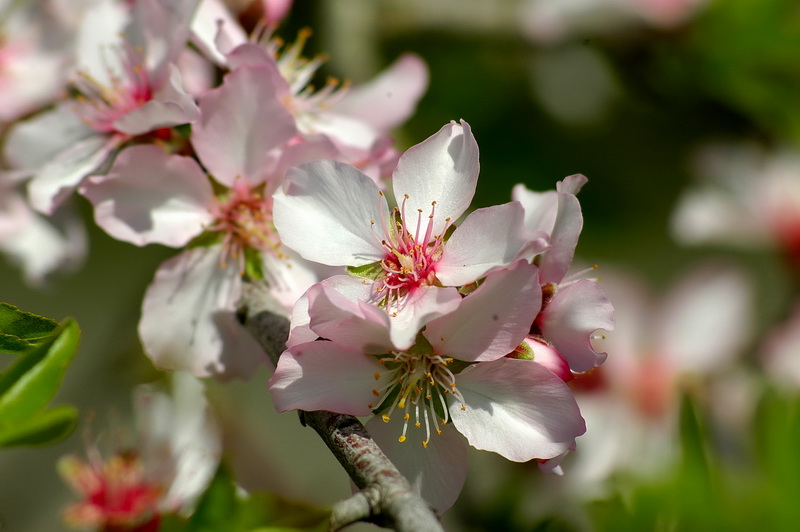Nothing graces the countryside more magnificently on grey winter days than the whites and sometimes pinks of the almond trees in blossom. Inspiring poets, artists and writers, the almond tree, Prunus dulcis, has a long history in the Algarve. Folklore tells us that in Moorish times, a gallant and handsome king fell in love with and wed a beautiful girl from northern Europe. He named her Gilda and brought her to his kingdom, Al-Gharb, where she became known as the “Beauty from the North”. Although admired by all and spoilt by an adoring husband, she soon became sad and withdrawn, finally confessing that she was nostalgic for the snow-covered fields and mountains of her country. Desperate that he might loose her, the king ordered that the whole region be planted to almond trees. The following winter he took her up to the highest castle tower and when she looked down, to her absolute and irreversible delight, she saw the entire countryside covered in almond blossom snow.
The almond tree is not native to the Algarve (indigenous to Central Asia), but the dry, rocky soils and the Mediterranean climate offer perfect conditions for growth. The almond, together with the fig, carob and olive forms part of what is called a “Pomar de Tradicional Sequeiro Algarvio” – traditional dry-land orchard.
There are two types of almonds in the Algarve, soft-shelled known as “côcos” and hard-shelled, known as “durazias”, but there are many cultivars that vary in period and length of flowering and shell hardness. Harvesting usually happens at the end of August in between the fig and olive harvests. By this stage, the sun has usually split the outer husk exposing the shell that contains the nut. Nuts are removed and dried out in the sun for about two weeks, traditionally on the flat roofs of typical Algarve homes.
At the turn of the last century, almond trees covered about 6000ha and almonds were exported to England, Belgium, Holland and Germany. The development of irrigation systems and subsequent diversification of agriculture into citrus and horticulture, the growth of tourism and increase in labour costs have all contributed to the decline of this as an industry. This pattern continues, with small, dispersed, groves unable to compete with the large plantations and sophisticated harvesting and shelling technology used in California and Spain.
Nevertheless, the almond is still, and will always be, the prized ingredient in many typical Algarve sweets and cakes. So, next time you are in a coffee shop, do not resist the temptation to try some colourful marzipan or a pastry made with “amendoas”.

